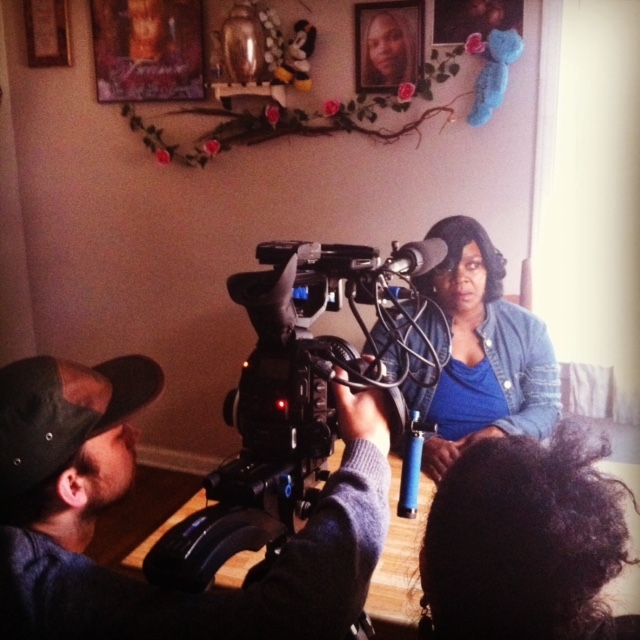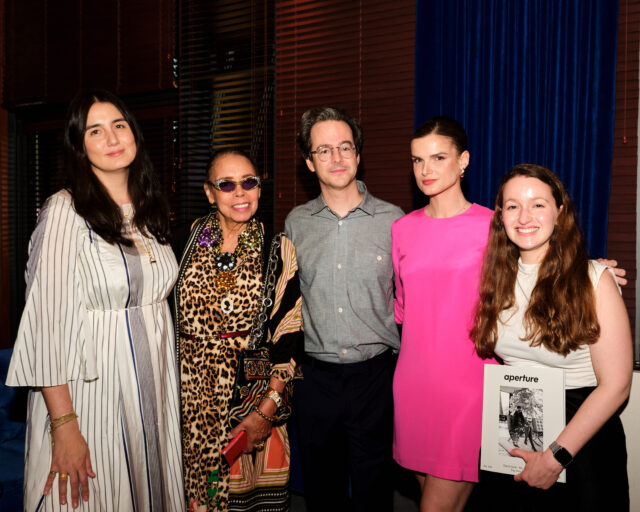Behind the scenes of Treasure: From Tragedy to Trans Justice, Mapping a Detroit Story, 2015
One night in fall 2011, police officers in Madison Heights, a suburb of Detroit, responded to a call at a Motel 6, where Shelly Hilliard was caught with marijuana. Shelly, a transgender African American teenager also known as Treasure, faced an impossible choice. Threatened with arrest—and the risk of violence if sent to a men’s jail—Shelly was coerced into a sting operation to entrap her marijuana dealer, Qasim Raqib. But, after the Raqib’s arrest, instead of protecting Shelly’s confidentiality as an informant, officers disclosed her identity. On October 23, in an apparent act of revenge, Raqib and another man, James Matthews, brutally murdered Shelly and scattered her dismembered body around Detroit. In her documentary Treasure: From Tragedy to Trans Justice, Mapping a Detroit Story (2015), filmmaker and Detroit native dream hampton recounts Shelly’s life and death in detail, emphasizing the stories of her friends and family. Here, in a wide-ranging conversation, hampton speaks with the model Geena Rocero, who came out as transgender in a 2014 TED Talk and later founded the organization Gender Proud, about Shelly Hilliard, community organizing in Detroit, the Black Lives Matter movement, and the urgent need to seek justice for transgender citizens.
Geena Rocero: Why do you want to tell this story?
dream hampton: Shelly’s story meant a lot to my community. By my community, I mean this inter-generational community in Detroit which is working in an incredibly oppressive structure. Detroit is a whole story in and of itself, and inside of this larger story are these other stories. But they’re all connected. And as a way of resisting that oppressive structure, a coalition emerged called Detroit Future Youth: twelve youth organizations in Detroit joined together basically to get to know one another.
My daughter was working as a member of an organization that Grace Lee Boggs began, called Detroit Summer. Grace Lee Boggs is a great revolutionary and a philosopher, who we lost at 100 years old last year. I was an adult ally to Detroit Summer and I support that youth collective in any way I can. Shelly was in an organization called Ruth Ellis, which is a shelter, but it’s also this amazing place where young black queer youth get together in Detroit to connect and to get leadership training. My daughter was connected to Shelly in that they were under this large umbrella called Detroit Future Youth, where there were twelve local youth organizations working together. When Shelly went missing—and in the film her mom describes learning about it on Facebook; we all learned about it on Facebook—we were on alert. Then the story of her very gruesome murder unfolded on social media.
Rocero: As a transgender person of color, I want to thank you. Because I think being that Detroit is in the background—and when we’re talking about the narrative of a black trans person—the nuances and complexities were particularly felt in this documentary.
hampton: Well, I gratefully accept your thank you and your gratitude. But I’m not deserving of gratitude, because all I’m doing is paying attention to a story that deserves to be attended to. And we owe each other that. That’s what we’re here to do, to be attentive to one another, and to care for one another. So I don’t get a cookie for that. That is the struggle right now when it comes not only to talking about Black Death, but also, more importantly, talking about Black Life.
There’s a very old hierarchy in terms of how and who we care about, and it’s informed by white supremacist heteropatriarchy. All kinds of trauma informs how we attend to stories of Black Death. Do we care about someone who is not male? If they’re not male, were they “born female”? If they weren’t “born female,” are they at least light-skinned? We have all this trauma as black folks in America, and it produces and reproduces these hierarchies. And that doesn’t even bring in the socioeconomic. What kind of work did this person do? Did they do “aboveground” work, or were they doing so-called “criminal” work? Are they still worthy of our attention? All of these things affect who and how we pay our attention to folks.
I am someone who has tried to decolonize my mind my whole life. So I am trying to be mindful of those questions as I go into a story. But with Shelly’s story, I care about black women, first of all, and of course that includes trans women, and I care about black women in Detroit.
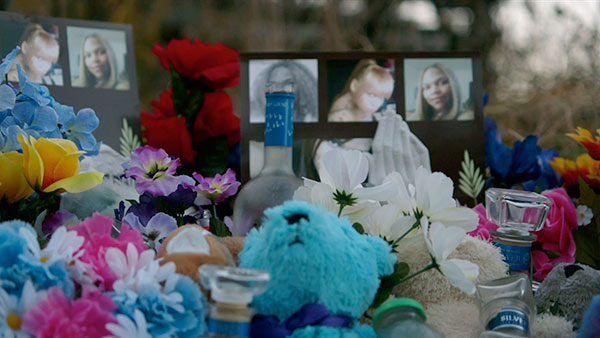
Rocero: Regarding the queer inclusivity that you mentioned, and the bigger dynamics of the Black Lives Matter movement, I think that’s been one of the most powerful things that we’re seeing—that inclusivity has to be part of it. How was that interaction for you when you were building this story and when this story came out?
hampton: I think this is something I always have to be careful about, because I had a journey of learning and understanding, and being really wrong on things, and learning from that. But my journey as an ally isn’t as important as, say, Shelly’s. And I like the word “ally” because it means that there are boundaries.
I consider the Black Lives Matter movement to be another iteration of the Black Liberation Movement. I don’t see it as separate from this long trajectory of movement building. The new thing that Black Lives Matter organizers are bringing is the technology. But this technology, social media, while it’s radical, it’s no more radical than television was during the Civil Rights movement: I mean, that was an incredibly radical intervention in movement for Black Lives. At one point, the printing press was a radical technology. But this intervention into how and who we care for, and all Black Lives mattering, that is new. And so is this emphasis on healing in the moment.
I was mentored by the most radical folks of the long going Black Liberation Movement, so I was politicized in a particular way. But that politicization still centered around masculinity. We had Kuwasi Balagoon; he was a member of the Black Liberation Army. I believe he died of AIDS in the ’80s. He was always out about being a black gay man, but his emphasis was on his being black first. And he’s often used as an example. Right now, you have a whole bunch of black men and women who will say things like, “Well, I don’t care what you are as long as you’re black first.” So that kind of demand for blackness to be the very first thing that you lead with, which is really telling people not to bring your whole self to this movement, that’s a longstanding problem. In fact, even though I was brought into movement work by these incredible black radicals, I ended up leaving a particular organization that I was a member of for fifteen years because they couldn’t come together on an antihomophobic principle.
So that kind of antiqueer feeling, and that centering of black masculinity, performed in a very particular way, has been a part of the movement probably since it began. There’s always been pushback against it, but it’s never been as visible and as centered and as forward as what Patrisse Cullors and Alicia Garza and Opal Tometi articulated when they described what their political project was going to look like, which is the Black Lives Matter project.

Rocero: The thing you mentioned about the centering of narrative is so critical. Because of Shelly’s experience, it connects to so many layers of what is happening within her identity, within the family dynamic, within broader racist and classist issues, and within drug policy. This particular story needs to constantly be told. What was your process?
hampton: First, from the beginning, there was a need to bring everyone up to speed around language.
Rocero: And that’s critical.
hampton: To call people “prostitutes,” to call people “transvestites,” unless they themselves are using that language, then I don’t even know what it is you’re talking about. Are you talking about trans sex workers? Are you talking about people in survival economies? I mean, what are we talking about?
While that was a part of what Shelly did, she also had all these other facets of her life. But her death also illuminated a very multilayered story. In terms of intersections, that included Jim Crow drug laws. It included police coercion of youth. It included Detroit’s post-capitalist landscape. It included sex work and other survival economies. And it included our hostile borders. Detroit has always functioned as a donut where it’s so-called empty in the center. (I don’t believe that my city is empty, I believe that we have all kinds of value and that we’re rich in all kinds of ways that are outside of capitalism.) But, we are surrounded by these hostile suburbs that have put up gates to keep Detroit youth out.
How does this all relate to Shelly? Shelly was at a motel where she sometimes did sex work with her other trans friends, including someone who was like a mother to her. She was engaged by the police because she was smoking a blunt—for having basically a gram or two of marijuana—which is all that fits in a blunt. She was then forced to do incredibly dangerous police work, basically to become an informant on the spot, to call her drug dealer and get him to bring more drugs than she’s ever asked for before. And the way that they’re able to coerce her into doing this dangerous informant work is with the threat of putting her in a men’s prison, which is basically like promising her she’ll be raped. They put a nineteen-year-old in this position of either going to a men’s prison that night, dressed exactly as she was, which is who she was, a woman, or doing this dangerous work of setting up a drug dealer, which, in Detroit, has always meant certain death.
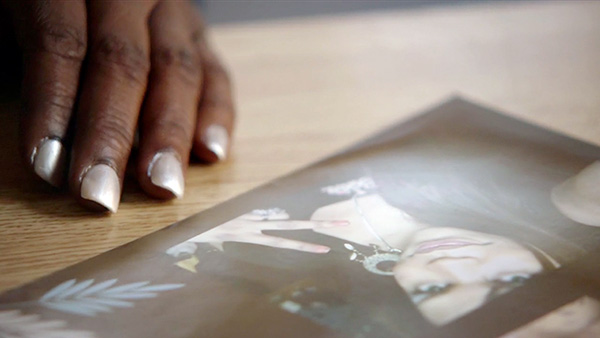
Rocero: You talk about the power in the layers of these narratives. One of the things that just brought me to tears, I couldn’t control it, was when Shelly’s mother joined the interview, and there is this quiet tone. You can feel it in the whole narrative of the film from the moment Shelly’s mother started speaking—the intimacy and the particular vulnerability that she’s allowed us to go into her pain, but also the love. As a filmmaker, as someone who’s telling the story, when do you step in? When do you ask the question? When do you allow that moment to just set in? What was that process like? Because it’s so powerful.
hampton: I went back and forth with my editor a lot about this. Basically what you’re describing is how, in the first four minutes, you just are smacked in the face with Shelly’s biological mother’s deep mourning. I really thought that was the only way to deal with it. I had absolutely heard the criticism of cis people, which is a really valid criticism, that we’re only interested in trans corpses, we’re only interested in trans people as dead, as murdered and mutilated, as the victims of traumatic violence that we then fetishize. Right?
Rocero: Right.
hampton: When I heard that criticism, it made me take another look at some of the reports of trans death, about which details about trans death were salaciously reported. It also made me ask myself hard questions, not just about Shelly’s death and about trans death, but about Black Death—this important intervention that the scholar Fred Moten added to the Black Lives Matter movement. He just tweaked it, he said, “black life matters,” meaning that we can’t always be in this mode of resisting, reacting, and affirming life only after death.
So when I thought about Shelly’s life—and we didn’t have a lot of footage of her—at first I was like, “Well, we can’t make the film.” We had to hack her computer to get the tiny bit that we have at the top. So then it became about: Well, what about the community she belonged to? What about these young trans people in Detroit, young queer folks in Detroit, who are activated to do a particular kind of work because of Shelly’s death? Someone like Karimu, who worked at one of the centers where Shelly was active, and his decision, which in the film where he asked himself, “You know, I could have lived a stealth life, and after Shelly’s death I really had to ask myself, ‘What does this mean to me? Am I willing to put my life on the line for this?’ And I am.”
You have people like Emani Love, who wasn’t even at the Ruth Ellis Center when Shelly was killed, but has, of course, attended the memorials and some healing sessions around Shelly’s murder, and other people’s, trans women in the community who’ve been murdered since Emani came to Ruth Ellis—but she wasn’t a member of that community when she heard about Shelly’s death. And Shelly’s death brought Emani to the Ruth Ellis Center, where she found not only community, but also training to be the activist that she is now, where she convenes regional trans justice meetings, where she does Gender 101 workshops in churches and middle schools.

Rocero: That commitment became this legacy, right? What you said when we talked about black life. A singular focus: this person had a life. However, when it’s reported in the media, when it’s a person of color, it’s always like, “Let’s bring up the criminal record. Let’s mis-gender this person.” Even within the context of what you said about not having enough footage, her family represents that vision.
hampton: Right.
Rocero: And the love that they have. The community that Shelly was surrounded by. That is alive. That is who she was. Those people were affected by her, because of her spirit. Because of her willingness to just be herself. If we’re going to put it in this local context of Detroit, being this place where one would say, like, “This is not a place for a trans person.” But Shelly existed. She had a family. She had a community. And you were able to show that. And I hate to keep on using the word “humanize,” but it’s just this validation of that legacy that she left, and you showed that. That’s lost in conversations a lot of times.
hampton: Shelly is a victim of state violence. She’s a victim of the war on drugs. It was two cis men from Detroit, one black, one white, who murdered Shelly in a very violent way. The manner of her murder could be argued to prove transphobia in terms of the dismemberment and the level of violence to her actual queer body. At the same time, she was a victim of state violence in that the police put her death in motion by giving her this false choice of a night in a men’s prison or doing this dangerous informant work, all over a couple of grams of marijuana, which, if they had gone a couple of miles north to the Oakland University campus, if they were looking to meet a quota of drug arrests for that month, they could have gone into the dorm of any one of those white students and found a couple of grams of marijuana. But the state targets the most vulnerable.
Black bodies have always been the collateral in the war on drugs. Then there’s the labor of the families. In Shelly’s family’s case, after they have to bury their brutally dismembered daughter—who they don’t mis-gender—they also have to do the work of rehumanizing her because there is also a criminalization of black corpses. There is this way that, even after these people have been brutally killed by community and state violence, their humanity has to be reestablished because their corpses themselves are being criminalized. Instead of talking at Shelly’s funeral about Shelly, some people took that opportunity to try to tell the trans women in the audience how they shouldn’t be doing sex work.
Rocero: Wow, what a dehumanizing moment that they have to experience.
hampton: And that was retraumatizing.
Rocero: When she died, all of a sudden people were forced to validate Shelly’s life because other people tried to impose this belief system about sex work. I felt so much for the family.
hampton: Well, not just for the family. For the trans women who were in the audience, who were attending the service, who then had to regroup back at Ruth Ellis Center and heal from her ceremony, from this homegoing that was meant to honor Shelly. And we’ve all seen this. We’ve been at family members’ funerals where the pastor thinks this is a perfect opportunity to save souls, so instead of talking about the deceased, they talk about how you should be accepting Jesus into your heart, so you don’t go to hell like this person. I have been through really traumatic funerals that have that tone.

Rocero: As an immigrant, when I first moved to the United States, to San Francisco, my new community was the Trans Filipina community because of the Asian Pacific Islander Wellness Center. I know the importance of those spaces, especially for communities that are the most marginalized. What is the conversation like at Ruth Ellis now? Have you visited them recently?
hampton: Oh, of course. We had a real partnership around the film. But even establishing that partnership took a lot of work, because they are there as a service and a shelter, first and foremost. Forward-facing media work isn’t their priority, and they really vet. I couldn’t just be like, “Hey, I’m dream hampton; I’m from Detroit; here’s a bunch of stuff I’ve done in the past.” They’re not impressed with that. They’re there to make sure that these teenagers who have experienced all kinds of violence in their families—on the streets, emotionally, physically—are protected. So, coming in with cameras, having their work exposed, isn’t their priority. It took a year-and-a-half for them to even allow me to shoot there, and that was based on principles and trust agreements.
And that is what I expect from Detroit, which, especially over the last twenty years, has been a place where a lot of people thought they were going to drop in and tell a particular kind of story with or without Detroiters. Even though I am a Detroiter, I’ve been away for twenty years. In returning, I know that I have to do that same work of knowing that there’s work already being done on the ground, that I am not going to come in and tell this story of this trans woman and the whole city is going to care and should thank me. They’re not interested in that at all. There are problems in Detroit that the trans community faces specifically, and they are already working on solving those problems. So, how can this film serve the work that they’re already doing? That becomes the question.
Rocero: I remember some of the images in the film within the backdrop of Detroit, within the knowledge and the realities. People will dance. People will laugh. People will find a way for their spirit to blossom in their own little way. That was important for me and for the audience to see. There’s that hope within this. The voguing. Right? That was touching for me.
hampton: And I struggled with putting that in. One of the notes I got from someone I really respect was, “Do we need another scene black queer kids voguing?” Of course, my kneejerk defensive reaction was like, “This is honestly what happened, with or without our cameras.” I’ve gone in with cameras, without cameras, and every time I come there is dancing.
But the question was still a valid one. When we stand behind the camera, we are bringing in an apparatus that privileges people, that establishes power dynamics, that tells you what’s valuable and what’s not valuable. I think about these kinds of questions when it comes to being a storyteller all the time. And I love what you’re saying about this affirmation of life. I see that in your work also. As I follow you around the world, I am just reminded of how important it is to have this really affirming work happening. That’s as important as fighting against injustice.
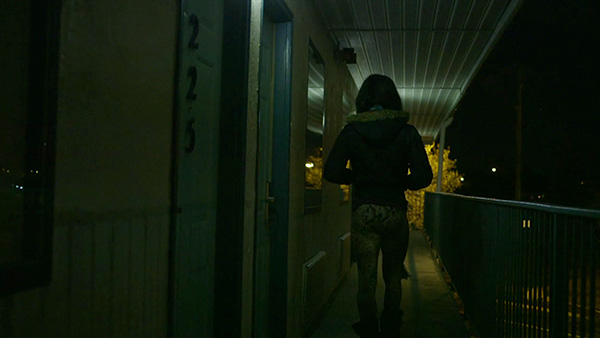
Rocero: You were there when I first publicly announced and shared to the world, sharing the most intimate moment of my life, my experiences. You were there and our community was there. So I think to be able to have Ruth Ellis Center to provide the space, it allows for this spark of that resurgence of that expression, of that willingness to just be yourself, whether there is a camera or not.
hampton: I was honored that you even told me that you were about to do that. I was just meeting you; I was in this space, you know, that we like to think of as a safe space. And you never know until you come out as your most real self if the space is safe. But we were in this circle of social justice activists and folks, who were privately invited into this space, and it was my first year there, and you came up to me and told me that you were about to do this. It was incredibly brave and generous.
I thought about this throughout my film, this idea of what’s considered conventional beauty. There is this way in which you are conventionally beautiful, and that you were able to live a stealth life before deciding to come out as a trans woman.
Rocero: It’s a choice. Right?
hampton: It’s a real choice. Now, I would say, though, that a lot of the sisters who are in my film are visibly trans.
Rocero: Exactly.
hampton: So that’s another kind of conversation.
Rocero: Well, it’s a privilege in itself, in a certain way. But, when I go to the Philippines, I walk down the street, I get screamed at, I get the s-word. That’s my reputation. When I moved to the States, it was a little bit of a different story.
hampton: That’s important to locate. I experienced that when I was in Palestine. I was like: How are these Israelis able to get on a bus and know the difference between someone from Iran, and a Palestinian? They’re just trained to know that. So I understand what you’re saying, that there’s this way that you may not be visible in America, where people just understand you as this beautiful model, but in the Philippines, there is a way that you’re visible.
Rocero: It’s the cultural dynamics of the relationship regarding beauty and social visibility of trans people. I exist within that. That’s my experience.
hampton: Thank you for adding that layer to it. In America, it’s a little rougher. This is happening right now with the trans bathroom laws. And cis black women—who can often be enemies of trans black women in this way, in that we are socialized to be gender essentialists, and have adopted some of the transphobic rhetoric of patriarchs and gender essentialists, and that’s because we’re trained to in every aspect of our life—are about to be put to a test. Like, do we really want white southern men policing our gender outside bathrooms? I’m talking about the way that a white supremacist lens already considers black women to be masculine, whether you’re talking about Serena Williams, whether you’re talking about Shelly’s mother. I remember screening the film to someone, and they asked me if Shelly’s biological mother was trans, and I was like, “It’s really interesting, this idea that we’re going to sit around to try to figure out people’s gender based on their presentation.” Because it’s not just based on their presentation. It’s based on all of the ways that we’ve been socialized. That’s why Sojourner Truth’s question “Ain’t I a Woman?” is essentially a gender-presenting question. You know?
Rocero: We need to be critical of this essentialist point of view. One should not stick to this rigid, binary point of view about expression. And people are all of a sudden realizing it affects everybody.
hampton: You think you’re femme as fuck, and now you’ve got a white man standing at the bathroom deciding who’s femme and who’s not? Well, what are you going to do when your transphobic cis black woman self doesn’t pass this white man’s gender test? Who are your alliances really with? That’s a deep question. Listen, we all need to have a reset around what gender is.
Rocero: Exactly.
hampton: I have hopes of supporting people like Emani Love who are asking hard questions about gender in the ‘hood in Detroit, and you’re speaking at the White House—but it all matters. You know what I’m saying?
Rocero: It all matters.
Read more from “Vision & Justice” or subscribe to Aperture and never miss an issue.










